自己动手,从零开始编写 Raft 算法来实现分布式一致性算法
分布式一致性算法概述分布式一致性算法用于在分布式系统中确保多个节点之间的数据一致性。
常见的算法包括 Paxos、Raft 和 Zab 等。
这些算法在分布式数据库、分布式存储系统和分布式计算框架中广泛应用。
Paxos 算法 Paxos 算法由 Leslie Lamport 提出,是分布式一致性算法的经典实现。它通过多轮投票机制来达成一致性。
class Paxos:def init(self, nodes):self.nodes = nodesself.proposals = {}
Raft 算法 Raft 算法是一种更易理解和实现的分布式一致性算法。它将一致性分解为领导选举、日志复制和安全性三个子问题。
class Raft:def init(self, nodes):self.nodes = nodesself.current_term = 0self.voted_for = Noneself.log = []
Zab 算法 Zab 算法是 Zookeeper 使用的分布式一致性算法,主要用于实现原子广播协议。
class Zab:def init(self, nodes):self.nodes = nodesself.epoch = 0self.history = []
开发实战建议在实际开发中,选择适合的分布式一致性算法需要考虑系统的具体需求。Paxos 适用于高一致性要求的场景,Raft 更易于理解和实现,Zab 则适合需要原子广播的系统。开发过程中,应注重算法的正确性、性能和容错能力,并通过充分的测试和验证确保系统的可靠性。
自己动手,从零开始编写 Raft 算法来实现分布式一致性算法!

内容简介
本篇文章分析了分布式一致性 Raft 算法以及 Raft 算法所依赖的理论,在此基础上讲解并实现 Raft 算法以及基于 Raft 算法的 KV 服务。通过阅读本篇内容,你可以深入了解 Raft 算法的运行机制,也可以学习到如何正确地实现 Raft。
本篇内容一共分为 11 章,第一章介绍分布式一致性算法,第二章详细分析 Raft 算法,第三章在第二章基础上整体设计,第四章到第八章逐个讲解基于 Raft 算法的 KV 服务的各个组件的实现,第九章讲解 Raft 算法的主要优化之一的日志快照,第十章是生产环境必须的服务器成员变更功能,最后一章介绍其他一些相关的 Raft 优化。
本篇文章详细介绍了 Raft 的核心算法、服务器成员变更以及各种优化的实现,适合想尝试实现 Raft 算法或者在生产环境中加入 Raft 算法的读者,以及对于分布式一致性算法有兴趣的读者。
学习目录

具体章节第 1 章 分布式一致性与共识算法简介
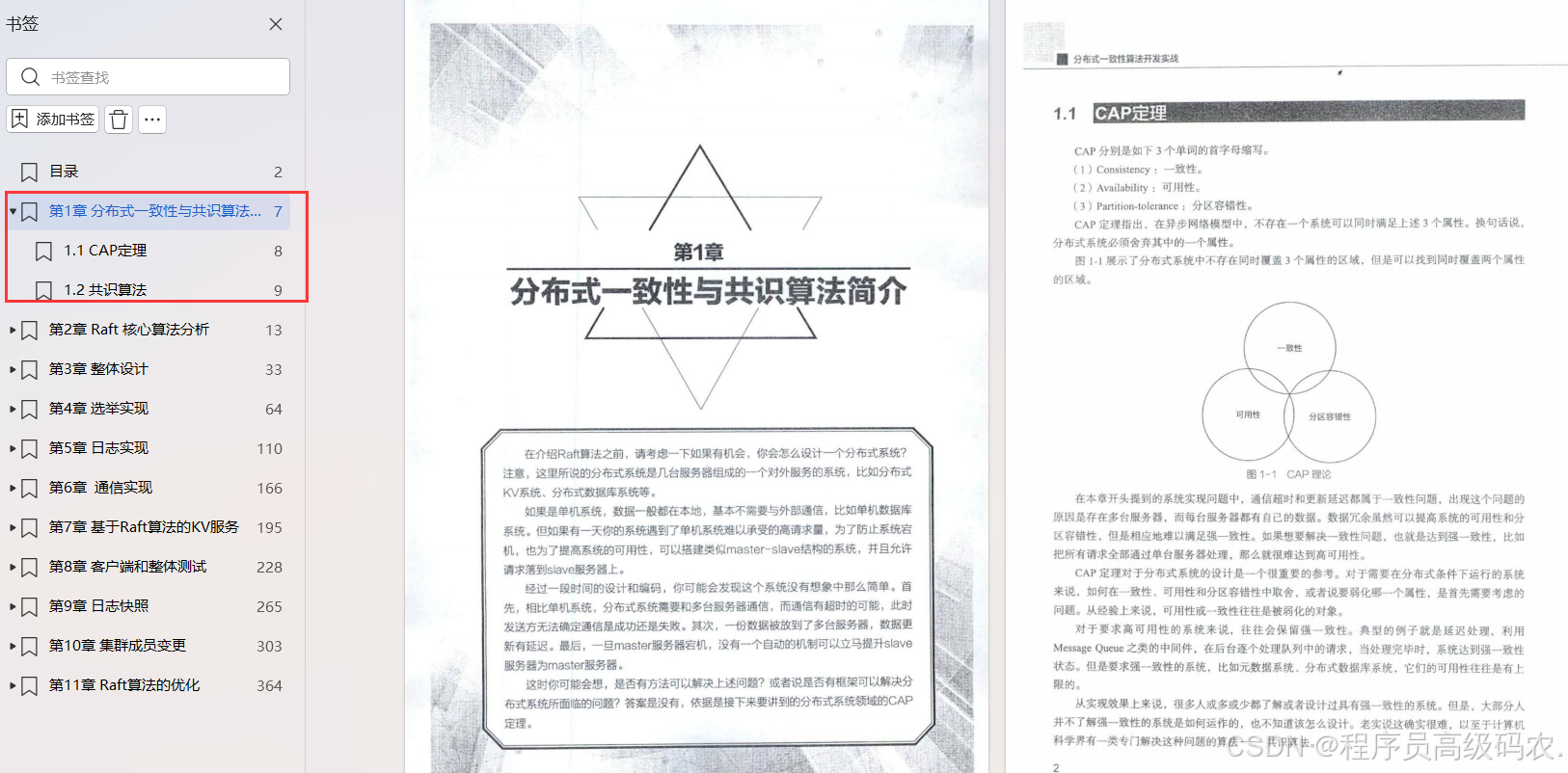
第 2 章 Raft 核心算法分析
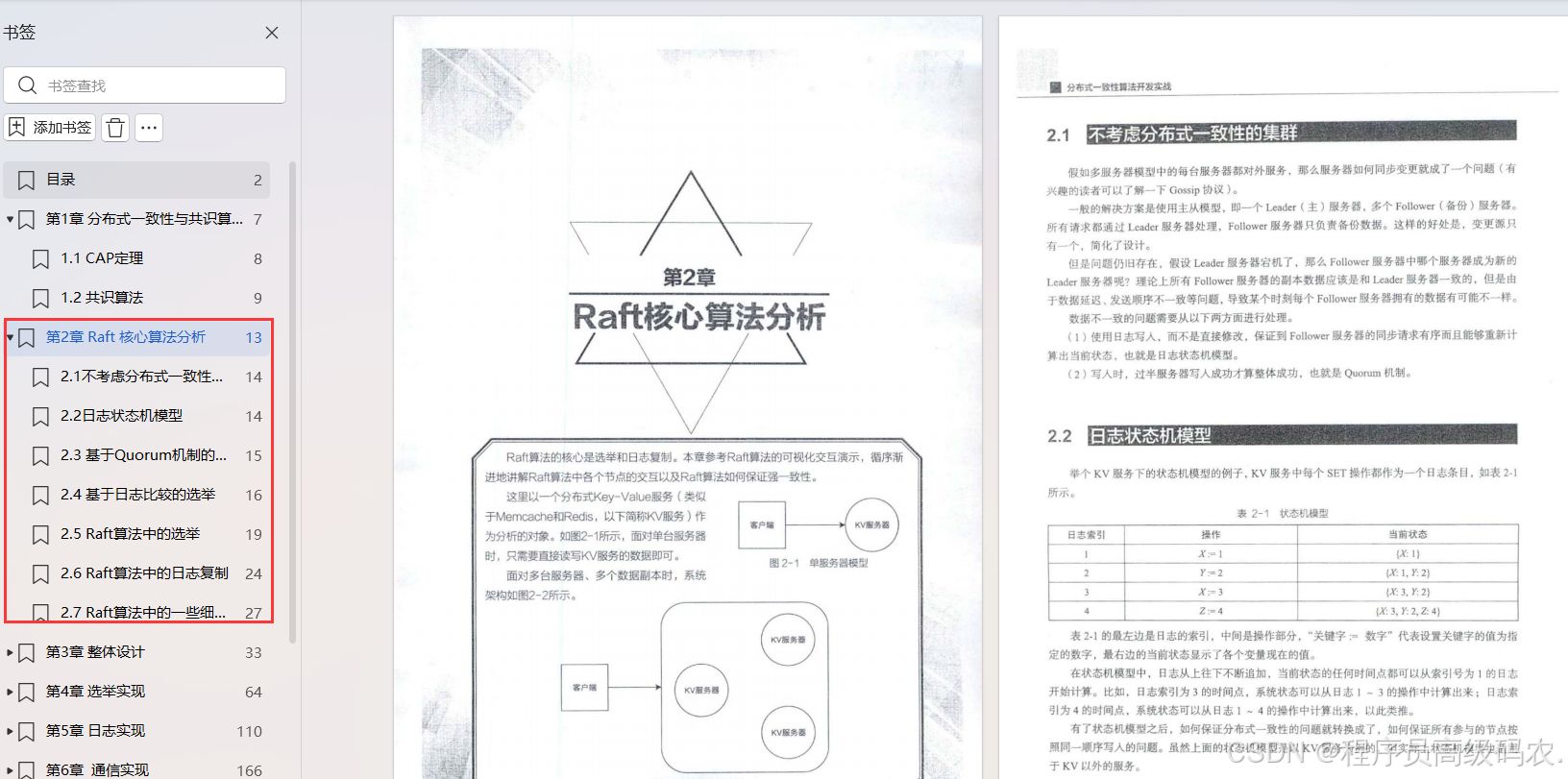
第 3 章 整体设计
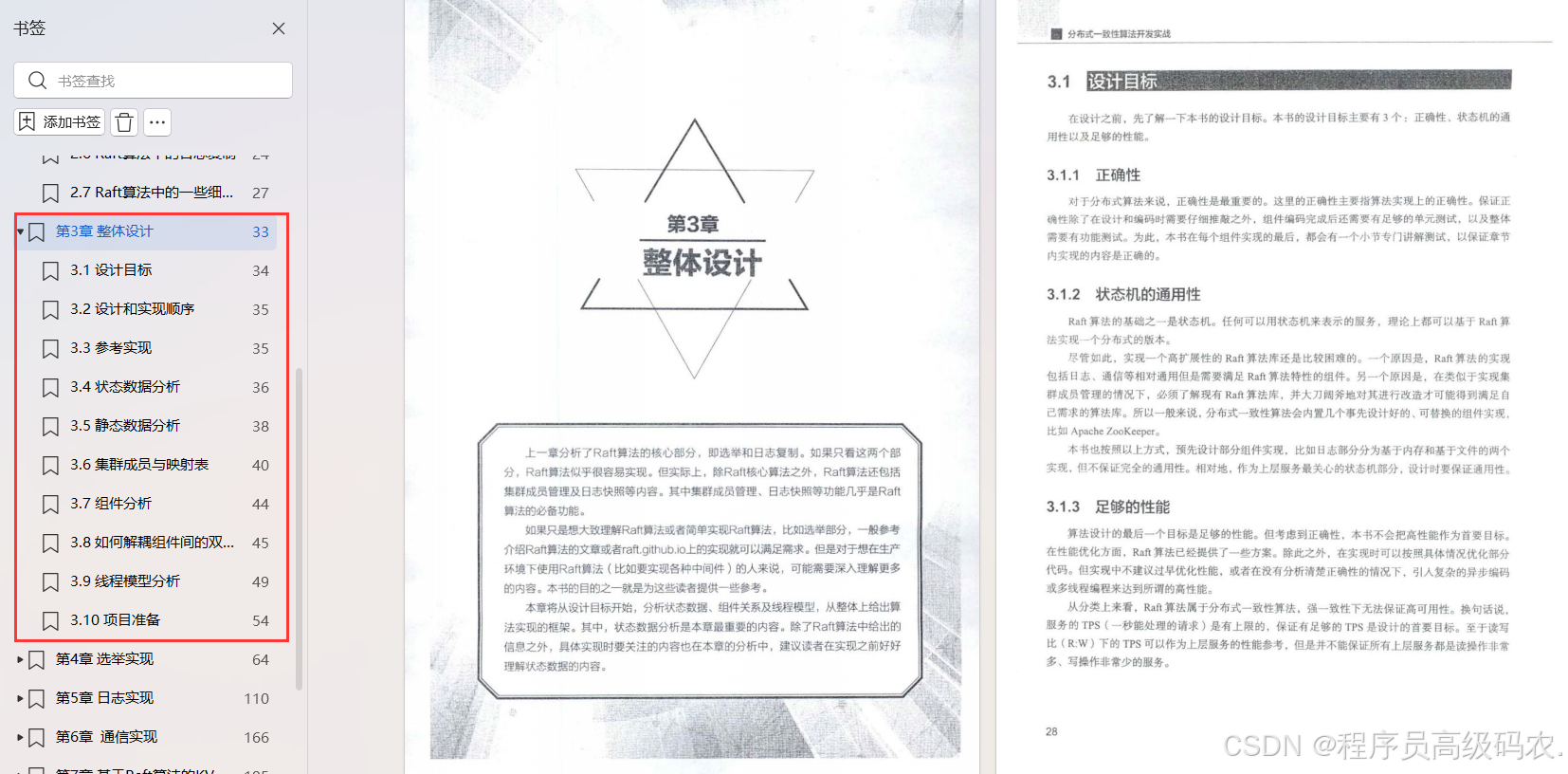
第 4 章 选举实现
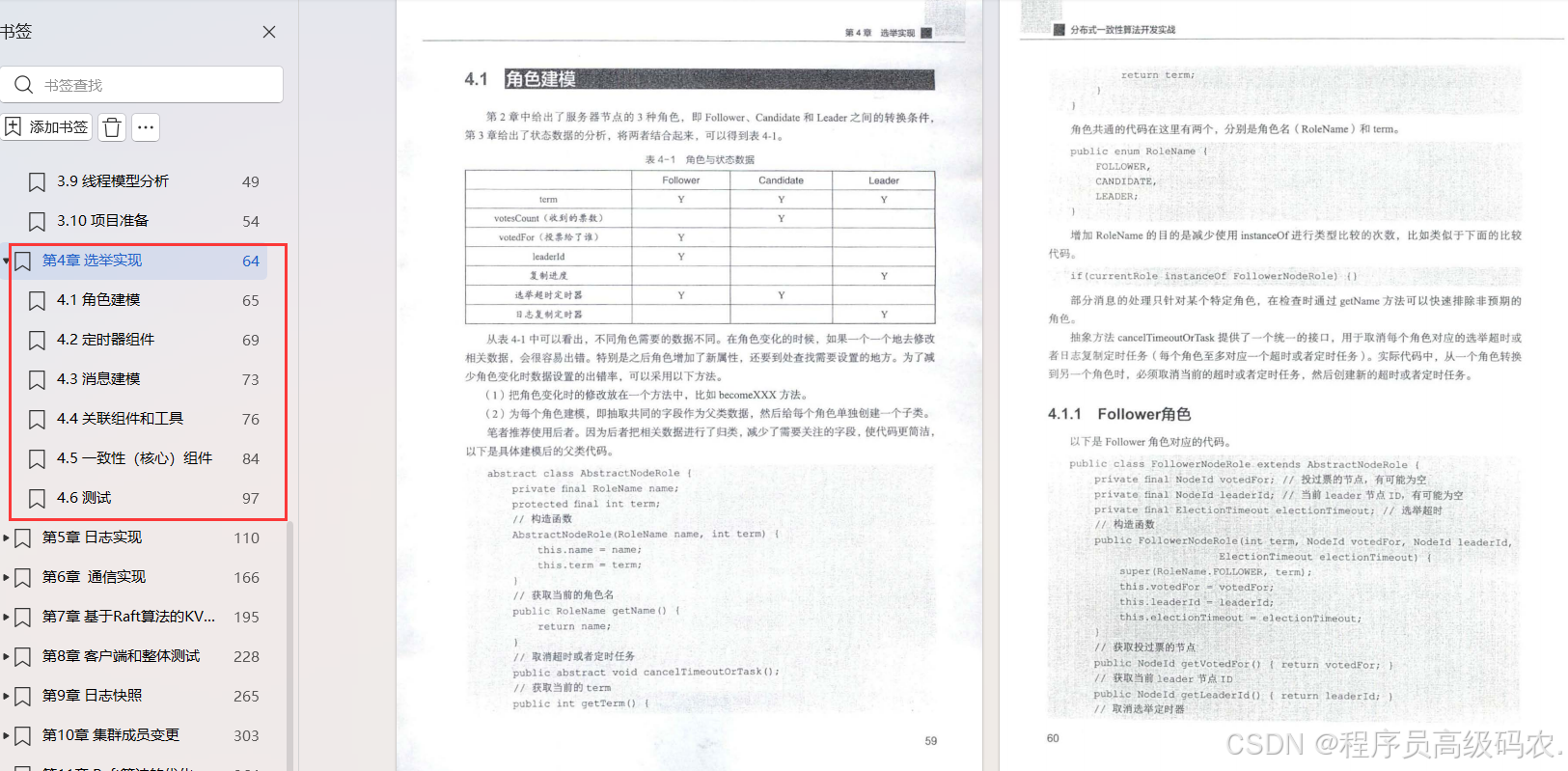
第 5 章 日志实现
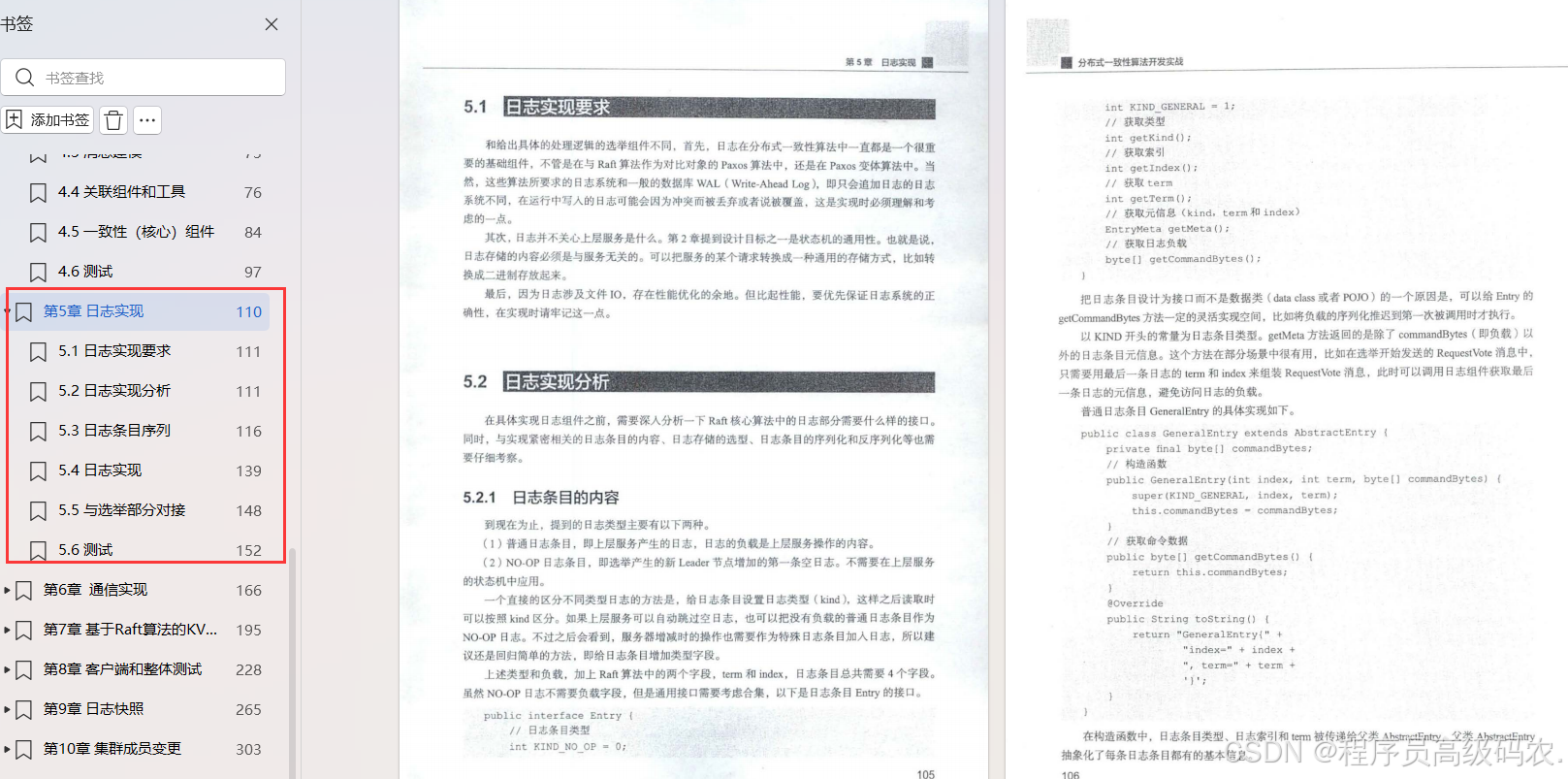
第 6 章 通信实现
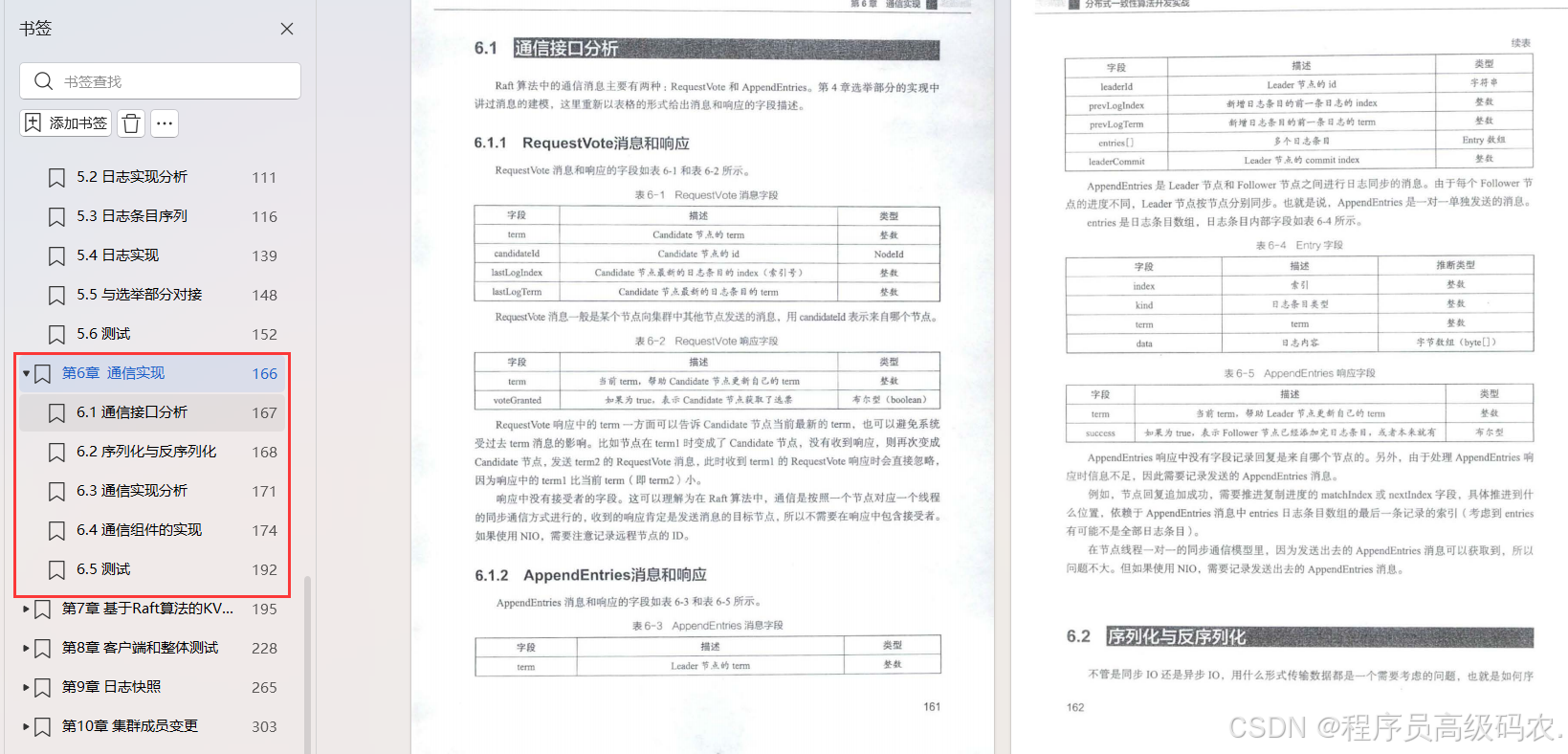
第 7 章 基于 Raft 算法的 KV 服务
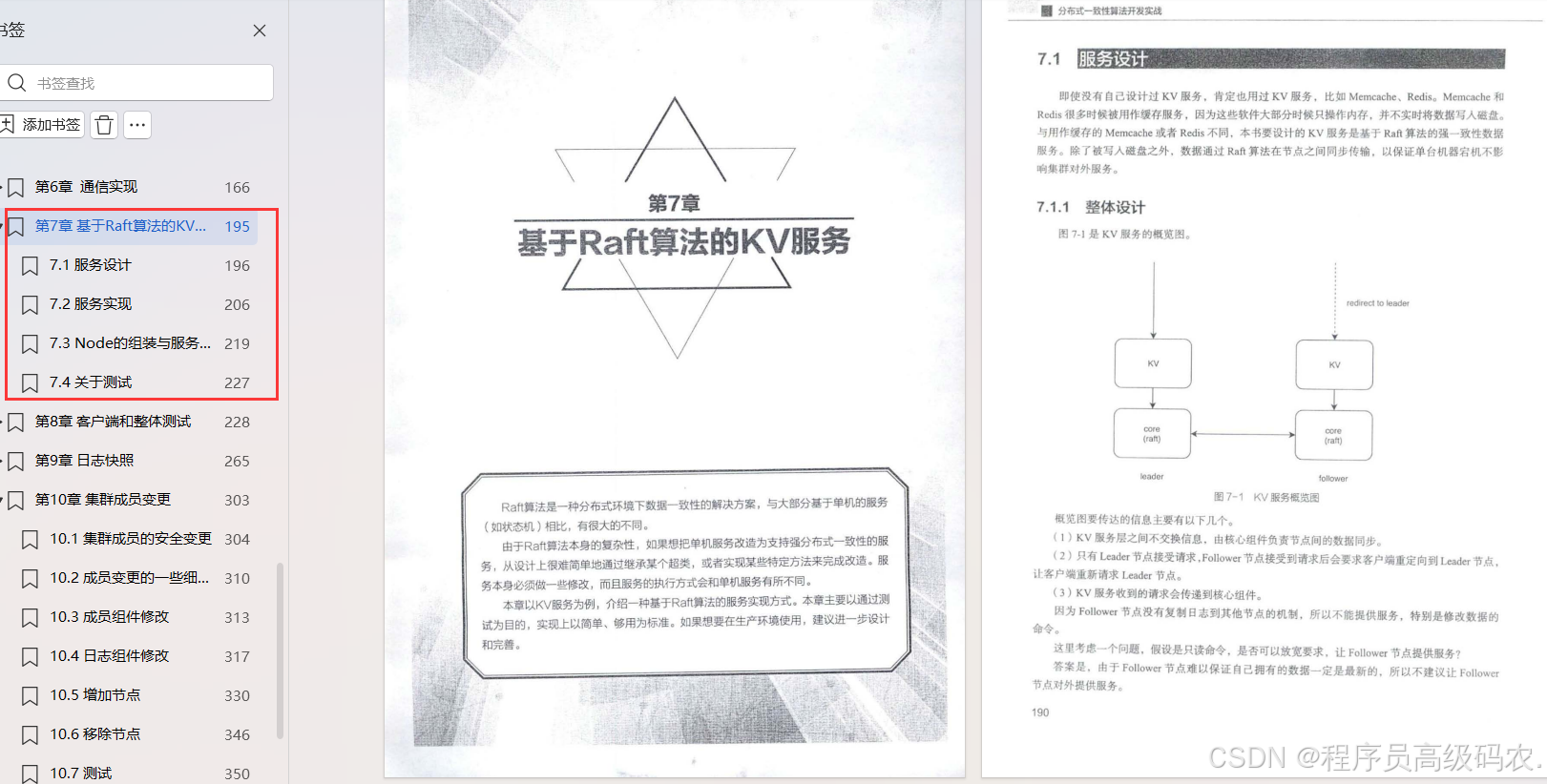
第 8 章 客户端和整体测试
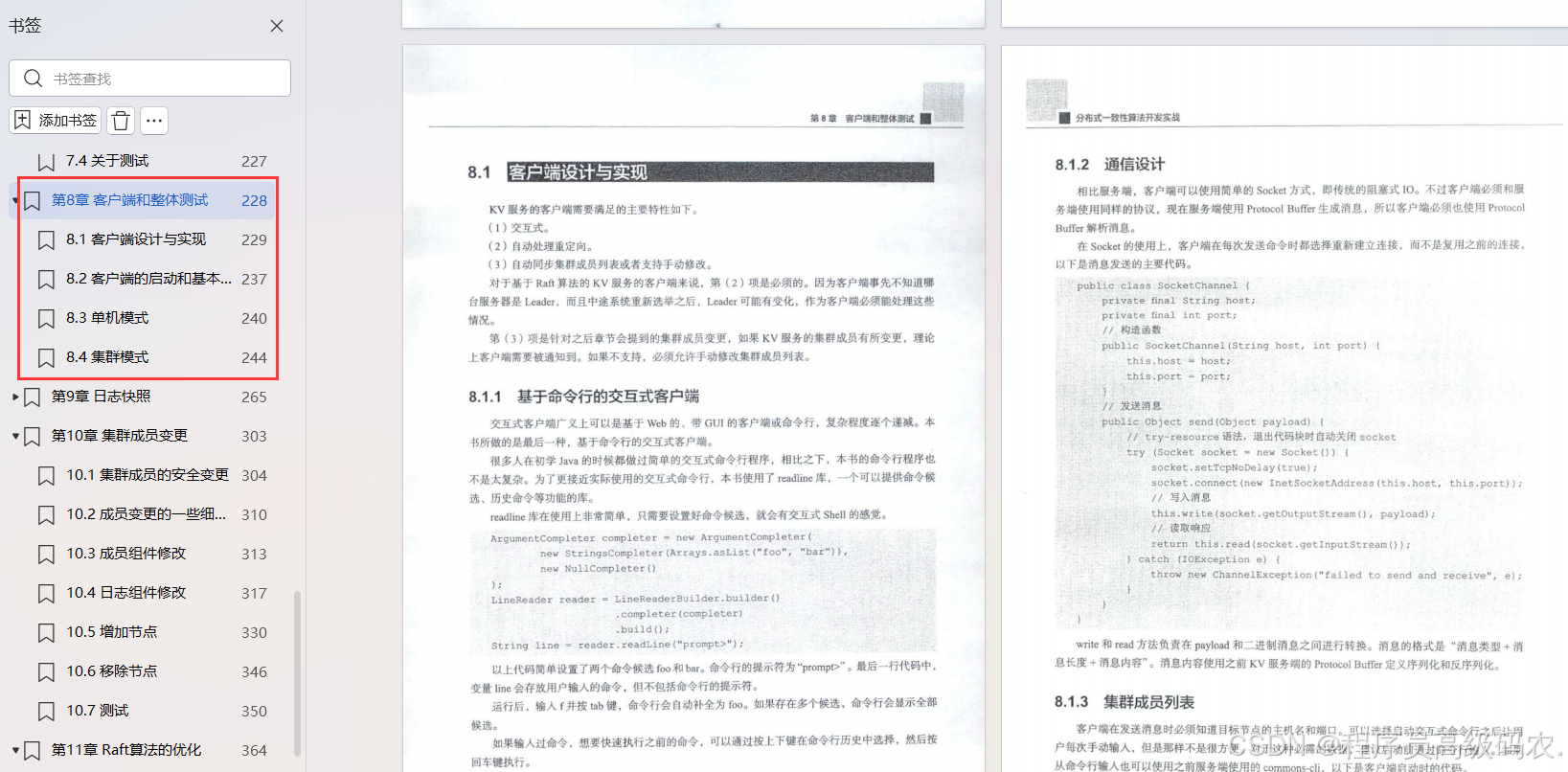
第 9 章 日志快照
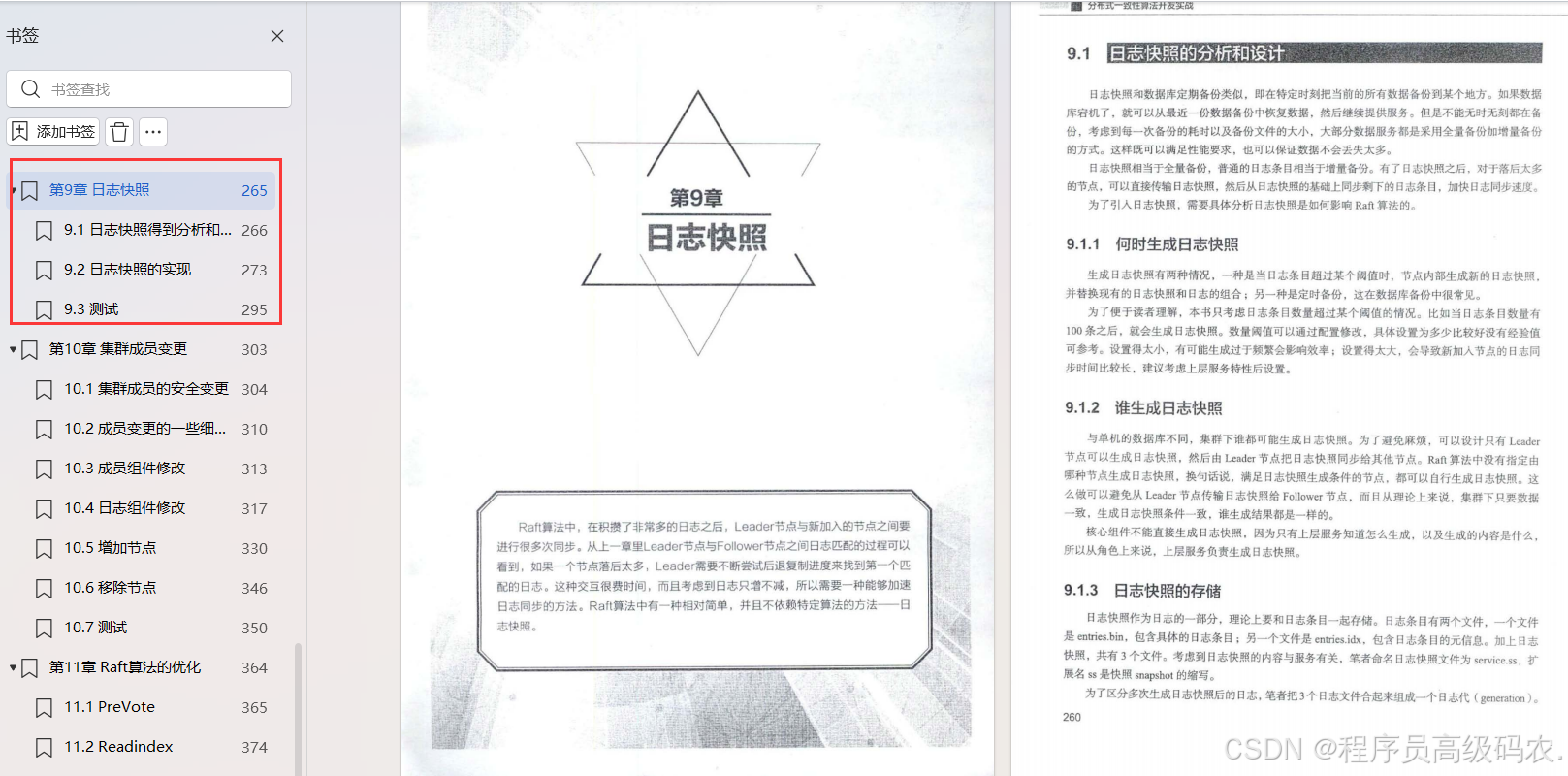
第 10 章 集群成员变更
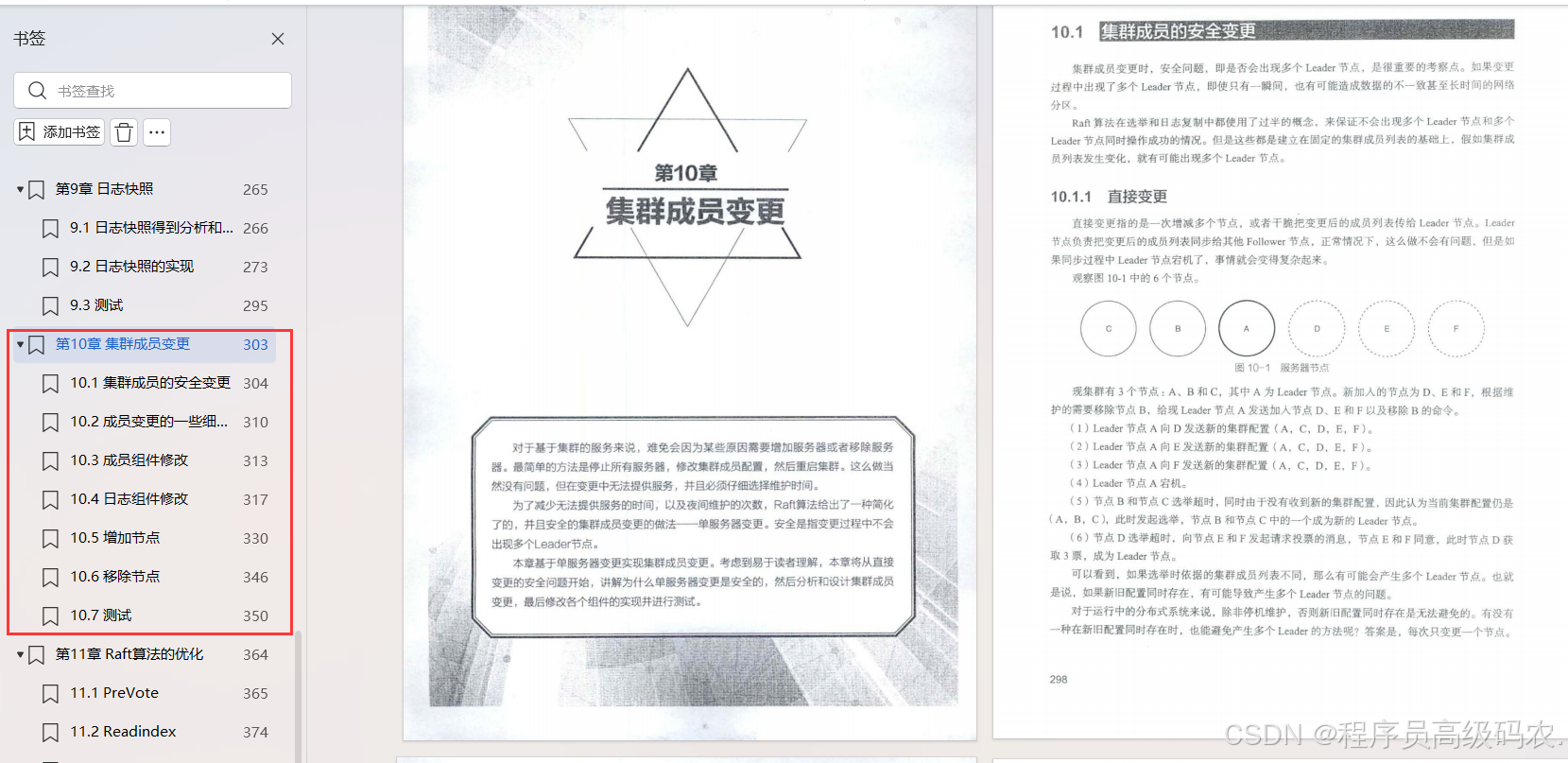
第 11 章 Raft 算法的优化
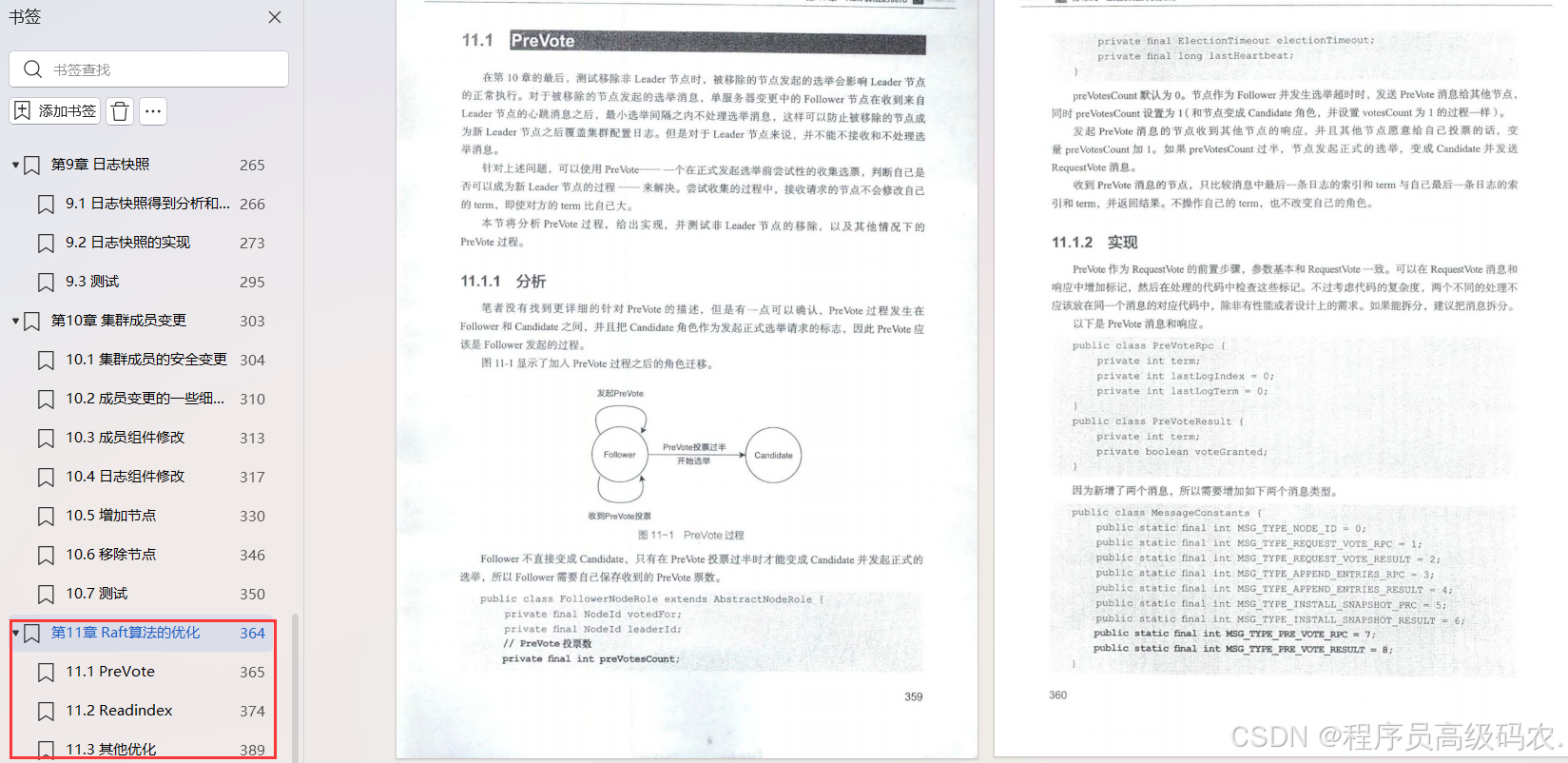

注:篇幅有限,资料已整理成文档,查看下方名片来进行获取!











评论